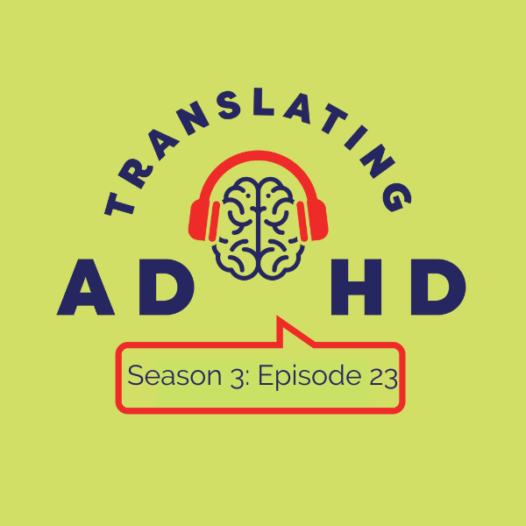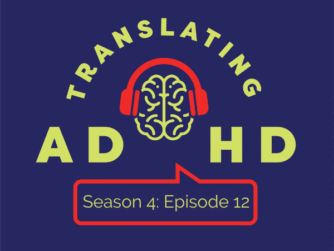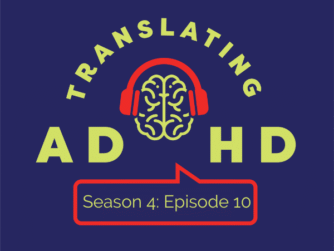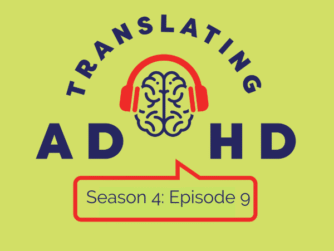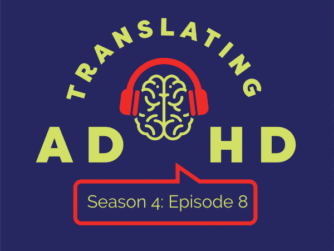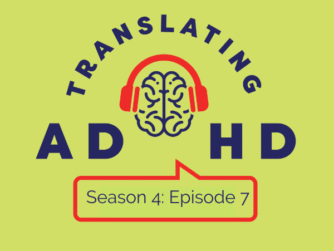In this episode, hosts Ash and Dusty dive into the topic of Body-Focused Repetitive Behaviors (BFRBs), which are common among individuals with ADHD. They discuss behaviors such as skin picking, nail biting, and hair pulling, highlighting how these actions serve as manifestations of underlying hyperactivity and sensory issues. Dusty shares personal anecdotes about her struggles with nail biting and cuticle peeling, emphasizing the importance of understanding the triggers and habitual patterns that lead to these behaviors. Ash adds insights into how daily routines and grooming practices can help mitigate these tendencies by addressing the sensory discomfort that often drives them.
The hosts explore practical solutions for managing BFRBs, ranging from habit reversal techniques to the use of fidgets and sensory aids. They emphasize the importance of maintaining a balanced lifestyle with adequate sleep, exercise, and self-care to reduce the occurrence of these behaviors. By engineering a life that aligns with the needs of an ADHD brain, individuals can better manage their attention and reduce stress, ultimately decreasing the frequency of BFRBs. Ash and Dusty encourage listeners to cultivate an awareness of their habits and to implement small changes that can lead to significant improvements in managing repetitive behaviors.
Episode links + resources:
For more of the Translating ADHD podcast:
- Episode Transcripts: visit TranslatingADHD.com and click on the episode
- Follow us on Twitter: @TranslatingADHD
- Visit the Website: TranslatingADHD.com
Episode Transcript:
[00:00:00] Ash: Hi, I’m Ash, [00:00:01] Dusty: and I’m Dusty. [00:00:03] Ash: and this is Translating ADHD. [00:00:05] Dusty: Just a reminder, the ADHD Bootcamp is coming up starting March 8th. This is a mega-body doubling session with me. It’s a structured body doubling session happening over a handful of weekends. It’s a total of 40 hours during which we are going to bust all your clutter, de-doombox all your doomboxes, help you do a hard reset so that you can actually apply some of those really cool ADHD hacks that you learned on TikTok somewhere.To sign up or get more info go to my website https://www.vancouveradhdcoaching.com/ or any of my social media. As always, sliding scale rates are available. It’s gonna be tons of fun. So I hope you will join us.
[00:00:45] Ash: And as another reminder, I have my Purpose course beginning on April 1st. This is a group coaching course intended to bring clarity to questions of “who am I” or “what do I want to be when I grow up” or “what is my bigger why”. For more information on this course, visit https://translatingadhd.com/ and click on the group coaching tab. Pricing information and the application are all right there. So Dusty, what are we talking about today? [00:01:15] Dusty: We are talking about BFRBs or body-focused repetitive behaviors. I don’t know why I said that in a deep voice. [00:01:24] Ash: I don’t either. [00:01:26] Dusty: So when I’m talking about body-focused repetitive behaviors, I am talking about skin picking, hair pulling, nail-biting, and even nose picking. Any kind of body-focused behavior that is repetitive. The technical term is excoriation which is like skin picking or dermatillomania. For hair pulling, the technical term is trichotillomania.And this is a thing that’s present in a lot of different kinds of mental health conditions and can be its own thing.
A lot of people with ADHD do have repetitive body focused behaviors where they can’t stop biting their nails, or like sort of peeling the skin off their lips, picking at their scalp, picking at their blemishes, picking, all kinds of stuff that kind of makes us go like, ugh gross, and we don’t want other people to know about it.
So just so you guys know, everybody, well, maybe not everybody, but a lot of people with ADHD are also doing this. It’s not just you.
[00:02:34] Ash: It’s definitely not just you. I walked around into my late teens and early 20s with like a permanent scab on my chin, because I would get these really deep pimples that were not poppable, and I would just mess with them and mess with them and mess with them and mess with them. It would become this bloody scabby mess that I couldn’t cover or hide in any way, and it was really embarrassing for me because it was also right on my face. Very visible.So, I’m a nail biter. I definitely have a number of these on board. When I was in elementary school, I was a nose picker. I got bullied out of not doing that one anymore.
[00:03:14] Dusty: Yeah, so it is totally a thing. I think my biggest struggle is nail biting and, but also cuticle peeling. I just have really kind of rough cuticles, and I’ve always had hang nails, and I’ve always struggled with nail stuff. It’s really hard for me because I don’t like the feeling of my nails being too long, like if I can kind of feel that there’s a gap between where my nail ends and where the skin begins, like even when I cut my nails and I’m taking good care of them, I will cut them like as short as possible.I don’t like that physical sensation, but that’s something I’ve always struggled with, and sometimes it gets really bad, where my cuticles are all bleeding and sore, and really painful to where every finger on my hand hurts. I’m lucky enough that I don’t have a lot of skin blemishes. I’ve always had pretty clear and even skin, but when I do, I have a really hard time not messing with it.
And so I’ve definitely struggled with a lot of this and so have many of my clients, whether it’s sort of blemish or zit fixation or scalp picking. I even had a client who would pull out his eyebrow hairs, and again, there’s a difference between an actual psychiatric disorder around this and ADHD. I want to make it clear that if you suffer from BFRBs, it doesn’t mean that you have full on, full blown like trichotillomania or dermatillomania or whatever. But I don’t think we talk enough about the fact that this is one of the manifestations of ADHD and here’s my theory around why. I think that it has to do with internalized hyperactivity.
As adults, again, we’re not bouncing off the walls, and we’re not getting enough physical movement to manage all of our hyperactivity as adults. So, this is one way that it comes out. I think it has to do with low self monitoring and low self awareness. So, just in the same way that sometimes we don’t know that we have to go pee, or we don’t know that we’re hungry, we don’t notice that we’re fixating on something and taking it way too far until it’s bleeding and painful.
But on the other hand, I also think it has to do with an inability to regulate attention, right? So we know that one aspect of ADHD is that it’s not that we have a deficit of attention, we have an inability to regulate it. And so sometimes that means we can’t stop noticing something. And certainly in my case, like, because I don’t struggle with a lot of facial blemishes, if I have like one zit, sometimes I’ll get teeny tiny little zits like on my chin. And they’re very small and they’re very painful. And I cannot stop noticing it. So even though I know I shouldn’t pop it, and you’re not supposed to do that, and like skin care, I will go three days, and I’ll spend every hour of the day talking myself out of fixating on it, which is exhausting and like we talked about in a previous episode, you’ve only got so much quote unquote willpower, so sooner or later, like the willpower just fails, and I’m like, oh, I’m just gonna like pop this sucker, and then like it stops hurting and it feels so much better. It’s the same with like, a hangnail or anything coming off my body that’s unusual, like I just can’t stop feeling it, and it’s like a constant drain on my executive function.
And so there’s different underlying reasons, I think, but I do think that it’s more present in ADHD than we realize. And, lastly, some studies have found that skin picking or these kinds of behaviors do boost or can give you a little bump of dopamine to perform them. So there’s also like we’re kind of getting an internal reward from doing it. It’s satisfying, right?
[00:06:46] Ash: Dusty, a new one for me, and you’ve probably noticed it since we spend an hour plus on camera every week, is that I have a goatee now. And that’s 100% just a built-in fidget, right? If I don’t have something else to fidget with, I will notice myself just playing with my facial hair. It’s there.I don’t pull on it. I don’t pull it out, but I’ll just be touching it and playing with it, which has the annoying downside that I think I might have a little bit more acne in that area because I’m constantly touching my face. And so maybe now we can move into sort of what do you do about some of this stuff.
Because for me when I started to notice that one thing, I noticed if I oil my facial hair, if I put beard oil in it and brush it so that it’s smoother – I don’t feel it as much. I’ve got very curly facial hair, so if it’s not styled, it will curl up and end up in my mouth, which I hate. That’s the grossest feeling ever. And I’ll just feel it curling and like touching my skin in a place that brings my attention to it. So one thing that has helped me is that bit of grooming. Taking the time, which I did not do today, obviously, because I’ve had my hands all up in my facial hair since we got on camera. But taking that time to oil the facial hair, brush it down, because then I don’t notice the sensation of it as much. And when I don’t notice the sensation of it, I don’t do the mindless behavior of having my hands in it without realizing that’s what I’m doing.
[00:08:18] Dusty: Yeah, so you’ve hit the nail on the head. I think that’s exactly it. At a certain point, I went on a deep dive about this and I read this in this insanely huge book. I might actually even have it down here. Oh my god, it’s right here. I threw the book jacket away finally, but look how thick this book is.It’s called The Hair Pulling Problem, A Complete Guide to Trichotillomania. It’s the only book I could find on the subject. It is very dry, and most of it is not applicable. And I read the entire thing cover to cover, because I wanted to make sure I understood this.
[00:08:47] Ash: That is an intensely big book for such a niche topic. [00:08:52] Dusty: Yeah, that’s probably why there’s only one. So, what I learned from this book, there’s two things. I’ll tell you what’s worked for my clients and me, but I’ll also tell you that again, if you are experiencing an actual mental health issue with this, you’ve got to work with your psychiatrist, you’ve got to talk to your doctors. I can’t help you with stuff that we would say is kind of outside the scope of ADHD but in terms of ADHD related, there was one part of the book that I thought was the most applicable, and it was where the guy was talking about what he calls HRT or Habit Reversal Training.He gave the example of a guy who comes in the door after work and flops down in his same chair that he always flops down in. Maybe he leans his head on his left hand and gets the remote, turns on the TV, starts watching a show. And because he’s leaning his head on his hand as he’s watching the show, eventually his hand starts looking for something to pick or pull. So basically the guy was saying start to notice the patterns of when you do it the most and so he said you know for this person what he might want to do is not sit in that chair or not lean his arm. Be aware of not leaning his hand on his arm, or do something other than watching TV when he comes in. Basically, reverse the habit, right. There’s habitual behaviors that we engage in that tend to lead to these places we’re in or situations we’re in, and that’s certainly the case for me.
Like especially with nail biting, I noticed that it’s not across the board, but by and large, I do the most nail biting when I’m watching shows or when my body is physically still and I’m otherwise unoccupied, especially if I find that show stressful at all, right? So whether it’s like a horror movie or even just like a tense social scene in a movie, I’m biting my nails, right? That’s where I’m most likely to do it.
So, easy fix. I need fidgets. Right? I need something to keep my hands busy while I’m in that space. And you kind of hit the nail on the head there exactly with the grooming thing. So if body focused repetitive behaviors are a result of an inability to regulate our attention away from physical stimuli that’s uncomfortable, then we need to manage that physical stimuli.
I think my greatest coaching accomplishment ever, like if I’m remembered for only one thing, it will be the day that I figured out that people who fidget on camera or who do nail biting or BFRBs when they’re on their zoom meetings should keep a bottle of lotion next to their camera because all day long y’all could just be moisturizing and I’m doing it right now as we speak. I’ll do it right into the microphone. You could have the softest hands. You could be the most moisturized babe on the face of this planet if only you keep the moisturizer in your visual line of sight when you’re on your endless zoom meetings because that will give you something to fidget with but it’s also positively contributing to your skin. For me personally, it’s not just about nail biting, it’s about the cuticles. I don’t know what it is but my cuticles are always hard and pokey and then it’s a cyclical thing because I bite them so then I get hangnails.
So I have compensated for this by constantly moisturizing my cuticles, like just putting moisturizer on my cuticles like 10 times a day and keeping nail files in every room of the house. Because if there is no point of entry, if there’s nothing that catches my attention, around the nail bed, then just I don’t, it’s not a problem, right?
I had a client who had this problem where he pulled his eyebrow hairs. He was always working. Think about this, right? Every situation I’m describing, we’re physically restrained. We’re sitting still, right? We’re not getting that hyperactivity out. So he would kind of rub his eyebrows and anytime he would find a pokey hard hair, he would pull it out.
If you’ve ever had a male partner, you know, especially an older male partner I don’t know what it is about men’s eyebrows, but they’ll go to sleep and they’ll wake up the next day with a foot long grasshopper eyebrow! I’ve seen this phenomenon happen in so many men that I’ve dated so I asked this client if they would be willing to try, like, going to get some eyebrow grooming done.
So they went and they got their eyebrows threaded, and lo and behold, they never had this problem again. As long as they groomed their eyebrows and got them threaded and got the long pokey hairs cut there was nothing to fixate on because the whole sensory issue was just completely removed.
[00:13:18] Ash: Yeah, so several examples here of grooming practices being one way to deal with this, to have a different experience. And Dusty, particularly with your nails, I’m noticing that a second support there is really easy access to tools. There’s lotion and nail files all over the house, so that way when the behavior starts wherever you are, there’s no additional barriers to doing the supportive thing. [00:13:46] Dusty: That’s right, and if the urge to fiddle with my cuticles is there, instead of exacerbating an issue, I’m using the moisturizer to actually combat the issue, but it’s accomplishing the same thing. I’m moving my hands, I’m moisturizing, and so I’m getting some sort of fidget, but it’s positively contributing.And I think that’s one level, right? There may be one easy way to deal with this. And I say easy with a caveat because if we’re talking about things being related to grooming, we can’t overlook the fact that hygiene can sometimes be hard for people with ADHD and we may struggle with more skin issues than we need to like dandruff issues, nail issues, any kind of physical issues because we may struggle with hygiene, right?
And so, if you are the person who has skin problems and you’re picking or popping at your skin, this might need to start a few steps back with figuring out how to cleanse enough and take proper care of your skin, which could even go further back to diet and exercise.
I’m very blessed that I don’t have to worry about more serious kinds of acne where it can be related to things like diet and sleep. And so if that’s your situation, that might be harder for you to just resolve. But yeah, I’m kind of, I’m sort of getting off track here, but, you know, it’s maybe not as easy as it sounds when we take into consideration the fact that hygiene isn’t always easy.
So I just want to acknowledge that when I say, it’s an easy fix, I don’t want to overlook those challenges.
[00:15:17] Ash: Hygiene isn’t always easy, and we’re really bad at noticing cause and effect as people with ADHD. I’ve always had some amount of body acne issues. That got worse when I started testosterone because that kicked off a brand new puberty, and so that was somewhat expected. And then separately from that, I was going through a period of time where I was kickboxing more days than I wasn’t and post transition showering is a lot less painful for me because I don’t have to shave my legs and do all of the other stuff.I can kind of get in, get out in 10 minutes. I’m a big fan of the quick shower. I don’t like showers. I never have. And so the body acne started to clear up. But then I quit kickboxing as often and it started coming back and it took me forever to figure out that the difference was a daily shower. If I take a daily shower, that mitigates a lot of my body acne issues.
But here I am, an ADHD coach, and it took me a pretty long time to connect cause and effect there. So it can be a frustrating process to diagnose and try to figure out skin issues, especially when we are bad at not only seeing cause and effect, but also delayed rewards, right? So implementing a practice that isn’t going to have necessarily immediate benefits, but will have benefits over the longer term.
I never moisturize. That is something I know I ought to do. I never, ever do. The only time I ever do it is this time of year when it is winter and it is so dry and so cold that my skin will be cracking and bleeding if I don’t.
[00:17:03] Dusty: As you were saying that I was just putting on lip gloss. That’s another thing I keep right here like again, point of performance. I keep it right here, right? It kind of took me a while to figure out that what I really need to be doing is filing my nails constantly, which I never did because I always had super short nails. So I never really did any kind of nail care and from time to time when it gets really bad because it does like the cuticle stuff, I’ll actually go get fake nails, which you would think would be like counterintuitive because I said I hate the feeling of having a long nail or like a nail pulling away from my nail bed. But, there’s something about having fake nails, which doesn’t bother me as much because they’re really thick so they don’t feel like mine.My nails have always been very thin. I think maybe I had a poor diet as a child or maybe it’s just genetic but my nails have always been very thin and flexible so the feeling of them “flopping” and pulling away from my nail bed is what bothers me. So when I have those really thick fake nails, it doesn’t bother me.
They look totally amazing. I feel like such a babe. And it is not even possible to like, pull or pick at my cuticles with them on there. I don’t tend to keep them forever for one because they’re kind of expensive and it’s a lot of upkeep. But also, I can’t open pop cans or play the guitar, so I don’t tend to get them a lot. But once or twice a year, I have to go and get fake nails to just give my cuticles and my nails a rest and it’s so helpful.
So what I wanted to also talk about is sometimes there isn’t always that habit reversal thing where there’s a really clear “if this happens, then this happens” and then I pick my nose, right?
Like, there’s not always that, right? And so, what do you do when the sort of body focused repetitive behavior is a little bit more kind of whenever? So for that, I think again, like mindfulness is really important, right? If you’re just generally struggling with a lot of ADHD and you’re never pausing, you’re never slowing down, you’re never being present. You can’t notice what’s happening. You can’t fix it. But I think generally engineering a more ADHD friendly life is gonna help a lot.
So I’m trying to think of some examples here. I had one client who actually struggled with chewing the hair off the back of his hands as a habit. And it was really embarrassing for him and he actually had to like shave, he would like try to shave his hand so that he wouldn’t do it, but then there was like a weird, you know, line of hair and so he was trying to kind of figure out the best way to handle that. And we figured out, it was happening in the car when driving.
So again, it was a matter of finding something for him to do with his mouth while he was in the car, like having gum, right? But if you just struggled with this all the time, maybe you just need to be chewing gum more often. Or if gum doesn’t agree with you, or that doesn’t work for you, I love to always be chewing like sunflower seeds because I feel like a little squirrel. It’s always something to do – it keeps my mouth busy.
Or, for adults, it’s called “chewelry”. So we originally made this for babies. It’s sort of like silicone or like sort of rubbery, plastic-like, chewy things that babies could chew on. And then a lot of autistic adults found that they also enjoyed that sensory stimulation. So, you know, adults can use them too, right?
Like, having something to keep your mouth busy. And as kids, I don’t know about you, Ash, but, did you ever chew your sweater sleeves or the little drawstring on your sweatshirts or pencils? Sometimes we just need more mouth fidgets in general.
[00:20:29] Ash: I actually have a couple of teeth that are worn down from repetitive chewing on the plastic rings from like a 20 ounce soda bottle. Like, taking that off and chewing it. It’s absolutely terrible behavior. I completely messed up my teeth as a child doing that. But yes, I do have the mouth thing. I have also learned for myself that having something on my person to keep my hands busy if I’m going to be in an environment where I have to be still in other ways makes an absolutely huge difference.Most of my clients don’t notice this, and you may have never noticed this, but I am constantly fidgeting. I have these pieces of paper that I like to roll up and unroll. This is actually a check that I wrote myself or a tiny piece. I know you all can’t see this, but I’m holding up like the payment line only from a check where I’ve folded the paper back and forth to rip it into strips.
And then I roll it up into little curly cues. There are little curly cues littering my entire desk because for me, I just need my hands to be busy. I need something if I can’t move the rest of my body. It really helps to at least be able to move my hands. At conferences, you will often see me with, I’m not an artist by any means, grid paper in my notebook so that I can doodle little geometric things.
I often wear rings so that I can pull the ring off, like rings that I don’t care about if I drop it or lose it, so that I can pull the ring off and fiddle with it. So yeah, that is a big one for me is if my hands are otherwise occupied, then I won’t be picking at myself. Because for me, I just need to move. I need something to do. And if I don’t have access to that in another way, that’s when I will start picking at my own skin. And embarrassingly, I have to be careful when I wear sandals because I always sit cross-legged, and if one of my toenails feels weird, I will notice myself sitting and talking to somebody, and like, I will be picking at a toenail.
[00:22:28] Dusty: I’m not embarrassed about it. I will constantly pick at my toenails. I can’t help it, I’ll pick at anything. I went through this weird phase in my mid-twenties where I moved provinces and the province I moved to was maybe a different barometric pressure or humidity or something, but, like, all the skin on my feet got really dry and I started peeling skin off my feet.And so, yeah. I was picking at my heels, and started peeling and started getting crusty and then I couldn’t stop. I peeled so much skin off my heels. I couldn’t walk, literally it was painful to walk. I was peeling away the hard skin on my feet. It was really grody. It was bad.
So this is a real thing. It really affects me for sure. I got this the other day at Claire’s, you guys can’t see it but it’s like this little ring, and it’s one of those things with like sand in it that just moves and it’s sparkly and pink and honestly it’s my favorite new fidget right now because it’s like visual. It’s visually engaging but it’s something for me to do with my hands. I can sort of flip it and stuff and I’ll often be coloring in an adult coloring book when I’m talking to clients. I used to really love to knit and I wanted to get back into it, but I sort of forgot how. I got a crochet kit, but I haven’t and I lost the QR code to the video tutorial, so I gotta get back around to that. But I hear a lot of people doing crocheting and knitting. Like you said, doodling or drawing.
So I think the key thing here is that a lot of the BFRBs are an underlying expression of hyperactivity that we don’t get to manage as adults. We need our fidgets, we need to manage the sensory issues on our own bodies that are going to lead to picking or pulling.
And then lastly, like, I think what’s important too is dealing with this before you ever get to it, right? If you’re underslept, if you aren’t getting enough body movement, if you don’t have enough stimulation, if you are living this life where you’re beating yourself up and you’re full of stress, I think and this is just my opinion I don’t have a study on this, but I think you’re gonna see a big uptick in those behaviors. If you are getting enough sleep and also getting exercise, like getting your hyperactivity out, I think that’s gonna really make a difference.
And if you have a life where you have room for fun, where you have room for, like, stimulation, where you can, like, bumblebee, and you can, like, be in the flow, and you can take movement breaks as often as you need them, my guess is that you’re gonna see less of these behaviors overall. You may still see them in those, like, particular situations, like how I always bite my nails when I’m, like, watching a stressful show.
There may always be particular situations you need to manage. But I think the more you can engineer your life for good ADHD brain health, you’re also starting from a better place where you’re gonna have less of that fixation, less, you know, self monitoring, less hyperactivity, less sensory sensitivities, right?
Like, the more gas we can put in our tank, the better off we are, and we may not struggle with this as much.
[00:25:25] Ash: Well said, Dusty, and one thing I will add before we wrap for today is something you said before we hit record, and the point that you were just making now is: when it is ADHD related, this isn’t compulsive. It’s circumstantial. It’s not cause, it’s effect, right? So the opportunity here listeners, in small ways and in big ways, small ways being doing that habit reversal, trying to notice where and when, trying to cultivate some awareness about what is the unmet need there.Is it a sensory issue? Is it the need for movement or hyperactivity? Is it particular to hands or mouth? And then in bigger ways, cultivating a friendlier life for ADHD, which is a big task and it takes time, but it does make an absolute difference in terms of the ability to regulate because it. The demands on regulation are so much less when we’re living in ways that work for us.
[00:26:29] Dusty: Well said, Ash. [00:26:31] Ash: Thanks Dusty. And we are now out of time. So until next week listeners, I am Ash, [00:26:38] Dusty: I’m Dusty. [00:26:39] Ash: This was the Translating ADHD podcast. Thanks for listening.
